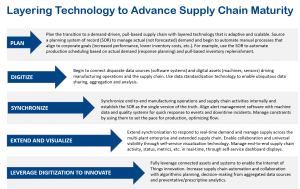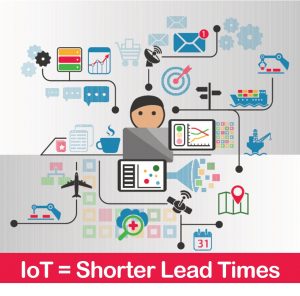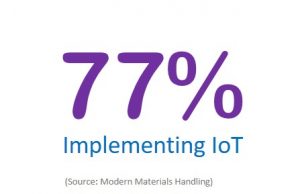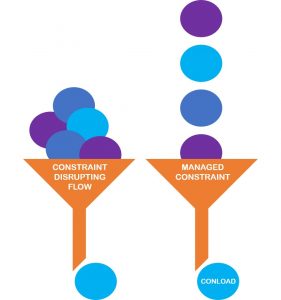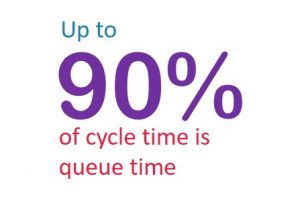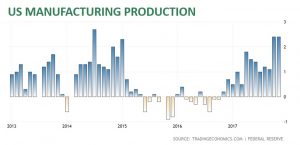Part one of a multi-part series to help you measure your production efforts wisely
LNS Research blogger Mark Davidson said, “When it comes to metrics, it’s often said that what gets measured gets done.”
I have found this to be true when working with many different manufacturers. Mark also writes: “Metrics that have the attention of business and manufacturing leaders tend to be those that get measured and improved upon by their employee teams.”
I agree– measurements do drive behavior. But are employees being rewarded for metrics that do not in turn reward demand-driven flow and the customer signal (both real and imagined)?
In this set of blog posts, I want to discuss the different kinds of metrics we’re obsessed with as supply chain leaders and why the modern lean, demand-driven production manager needs to adjust or abolish some “old school” metrics altogether. But before we get into specifics, let me set up some of the environmental factors that have contributed to the current climate of “KPIs above all.”
The People’s KPIs?
Over the years, there has been a lot more attention placed upon measurements. Key Performance Indicators (KPIs) are meant to clarify how we measure what we measure and provide an underpinning for people in production to see how well they are working toward their goals.
However, the amount of responsibility and work content for most workers has grown at the same time, and left these workers with little ability to truly affect the measurements that are prevalent in today’s manufacturing environment. This erodes their ability to continue to complete the tasks that are being measured.
Even when there is a specific measurement that makes sense for the supply chain, it may not be within the individual’s ability to affect all of the measurements that they are responsible for during production. There may be contradicting measurements, and there may be cases where during one part of the month the measurement is religiously followed, while during other parts of the month, they are breaking the rules because some other measurement has become a crisis.
Count the cost
In the last 20 years, the emphasis on reducing cost has also had a profound effect on the ability of workers, supervisors and managers to focus on results. I have seen countless improvement projects implemented. In the more aggressive organizations, I have seen leaders make budgetary and staffing cuts based on the cost/benefit analysis of a project. Perhaps this isn’t so bad, but at the same time, I see little or no verification of the results and actual performance. This state of affairs has us trying to do more work with fewer people, under increased pressure with fewer results.
In the next few posts, I would like to break down the operational metrics you’ll need to empower your workforce to get results—not to just behave according to flavor-of-the-month measurements. These Metrics for Action are not intended for overall business analysis. Instead, the intent here is to cut through the clutter of the all too often, and all too many, contradicting measurements and focus on the metrics that are going to provide insight to drive action. Action to improve flow, manage constraints, direct continuous improvement efforts and more. The goal is to provide real clarity around the elements that drive organizational excellence and enhance demand-driven results.
Before we begin, here’s why we should
Assuming is the worst: Most measurements used in manufacturing are derivatives of some other objective or assumption about the nature of manufacturing. These assumptions seemed important at the time because manufacturing software and information systems didn’t support a direct link between performance and measurement. They were very important “back in the day” because they provided a framework for decision-making in a time when there were few data elements to support the decision process. This was way better than the alternative of no decisions!
Put your money where your metrics are: If you trace these measurements to cash flow, you will find some interesting conflicts. In the past, having all the relevant data for making decisions created a great deal of measurements that act as a surrogate to actual per formance. These types of measurements have been around for a long time. They have become so common that they are not even considered as obsolete, but as “the way we conduct business.”
formance. These types of measurements have been around for a long time. They have become so common that they are not even considered as obsolete, but as “the way we conduct business.”
Even with today’s incredible ability to collect and contextualize data, these seemingly monolithic measurements are still being used. To test if your Manufacturing KPIs are obsolete, check to see how the measurements can be tied back into cash flow. If there is no direct link to cash in, cash out, inventory or operating expense, then your measurement may be an assumed measurement.
Customer Centric If there is no data in your company’s systems measuring what your customers are actually buying directly, then you’re working with a derivative measurement. Derivative measurements were used to simplify the planning process because the units purchased by the customer were hard to track or hard to translate into workflow. Today, synchronized, demand-driven systems can capture your customer order information across the entire production process—from order to supplier to inventory to shipment. You have all of the data points you need—but you may be still tracking derivative side-effects rather than meaningful metrics from force of habit.
The unfortunate reality is that most manufacturing measurements are the results of learned behavior, hidden behind several layers of assumptions that are obsolete or counterproductive in today’s manufacturing company. Stay with me through our metrics journey to see how you can laser-in on the metrics that really matter—to you, and to your customers.
Resources for more information:
White paper: Demand-Driven Manufacturing Metrics that Drive Action










